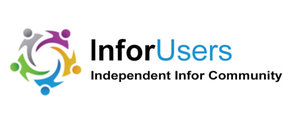The Problem: Software Programming is Expensive and Slow to Deliver Needed Solutions
Just 2% of the worldwide population knows how to code, and the need for software developers is estimated to grow by 24% over the next seven years.[1] Software programming is expensive and, in many cases, delivered later than needed. Because of a lack of women and racially diverse people currently working in the space, the knowledge transfer between what users of those groups need and what software developers deliver is less likely to meet many of those users’ expectations at the start. This in turn drives more rounds of software development to produce an effective software solution.
How many times have healthcare organizations found shortcomings in their software applications that impact their ability to provide efficient healthcare services? How long do these organizations have to wait before they can apply a fix is that may only partially resolve the problems? Sound familiar? These software-development iterations are expensive for both the vendor and the healthcare organization. In some cases, they lead to significant provider frustrations that may then lead to a complete replacement of the offending software. As we all know, software replacement is a highly risky venture in terms of cost, IT reputation, and operational disruption.
The Solution: Programming Democratization Enables Quicker Innovations from Users
The democratization/no-code software development solutions are graphical in nature and allow common people to create effective applications with desired workflows by arranging icons of software capabilities into models that can be executed as complete software programs.[2] New software can be developed in hours and modified instantly with minimal costs. Software development is then conducted by people with the most knowledge and experience of the software needs—no computer science degree required.
Democratization of software is also inclusive of the organization’s workforce. Women and minorities will be able to effectively develop nuanced software that is likely to generate more effective population health applications related to local disease, women’s health, or socioeconomic factors.
At the most recent Microsoft Ignite conference,[3] CEO Satya Nadella announced a host of new tools aimed at making it easier for anyone to develop apps. The new development environment is called the Power Platform. This platform allows users who have no software development experience to build apps and bots that include Microsoft AI tools. These AI tools include algorithms that can let apps read handwritten text, detect languages, and gauge the sentiment of any content, such as social media posts or customer reviews. When placed in the hands of everyday users, these software development capabilities will have a huge disruptive impact on healthcare IT.
The Justification: User Designed HCIT Solutions to Drive Innovations
Partners HealthCare created a democratized version of AI to enable more clinicians to create AI for data analysis. The platform is called the Center for Clinical Data Science and provides researchers and clinicians with access to data, graphics processing unit (GPU) computing capacity, and supporting software required to develop their own AI algorithms to be implemented in the clinical environment.[4] This approach to AI development is expected to increase the number of effective AI models for improving clinical outcomes by incorporating local population variation into the analytics.
St. Luke’s University Health Network has used Power Apps from Microsoft to build 20 apps to meet departmental needs and better analyze information.
The Players: A Mix of Global and Healthcare-Focused Solutions
Many of the emerging democratization-programming environments are provided by global technology companies that have healthcare products. A few healthcare-specific tools are also being recognized in the market. Representative companies include the following:
Success Factors
- Evaluate democratization platforms that have successful healthcare implementations within modalities of care that are likely to result in quick adoption and deployment of applications built by end users.
- Conduct due diligence of these solutions with highly technical personnel (e.g., CTO) to ensure the democratization development platform is stable and has an extendible architecture to drive advancing capabilities.
- Select a controlled pilot environment with highly engaged healthcare professionals who have knowledge of the environment workflows and data streams to evaluate governance, implementation, and support processes needed to extend the solution across the organization.
Summary
A democratization platform’s ability to support users who understand the workflows and data streams of an environment related to the design and development of new software applications will likely generate highly effective healthcare applications. These applications will extend the value of current financial and clinical systems. If existing legacy enterprise and departmental software solutions can be enhanced with user-designed democratization applications, user satisfaction and patient care services will likely improve. More importantly, enterprise and departmental application replacement may be significantly reduced.
Emerging FHIR standards for data interoperability within clinical applications will create a foundation for democratization development tools to be more widely employed by healthcare organizations. A rapid adoption of these tools will drive more effective AI models for analyzing data to improve evidence-based medicine, medication management, diagnostic support, supply chain management, and financial management.
Ultimately, democratization software development platforms will reduce the cost of extending healthcare IT capabilities while dramatically improving the flexibility and efficiency for apps to better support healthcare delivery services.
[1] https://www.forbes.com/sites/cognitiveworld/2019/08/29/democratizing-software-for-the-greater-good/#7beb611371f2
[2] https://hackernoon.com/competitive-advantages-follow-the-democratization-of-technology-fddd40fe5c54
[3] https://qz.com/1740052/microsoft-shares-plan-to-make-anyone-a-software-developer/
[4] https://worldmedicalinnovation.org/partners-healthcare-embraces-the-democratization-of-ai-to-accelerate-innovation-in-medicine/ Photo credit: Adobe Stock, Sashkin


